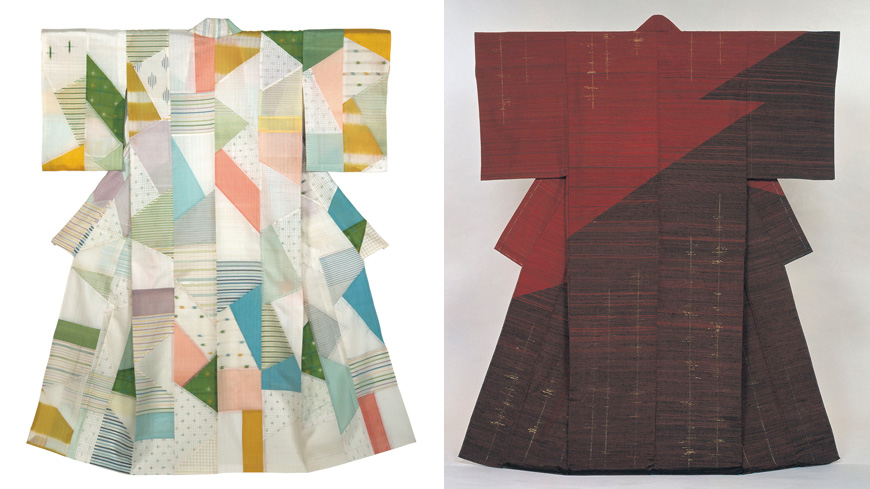Weaver and dyer Fukumi Shimura's (b.1924) inherited an interest in craft from her mother, Toyo Ono, who made inroads through the early 20th-century mingei (folk crafts) movement led by philosopher Muneyoshi Yanagi. Introduced to the lacquer artistan Tatsuaki Kuroda in 1956, Shimura began to hone her craft sensibilities, leading her to show her work in the 1957 Japan Kogei Association exhibition. Her skills and aesthetic proclivities were further refined under the tutelage of famed ceramicist Kenkichi Tomimoto and textile dyer Toshijiro Inagaki.
In the later years of her career she has received all of the most prestigious craft-related awards, and in 1990 she was designated as a National Living Treasure. This was soon followed by her being named a Person of Cultural Merit in 1993. The distinguished international Kyoto Prize for the arts came her way in 2014 and last year she received the government's Order of Culture.
Shimura represents the tsumugi (pongee weaving and dyeing) tradition, particularly that of kimono textiles, in which fibers and fabrics are dyed using natural vegetable pigments. An element of chance imposes itself on the process as the dyes never come out exactly the same. The tradition is said to have been introduced from China a millennium ago, though it took its own course in Japan over centuries of indigenization. Such dyed kimono had its origins among the common folk and developed along with folk wisdom — all grounded in the everyday.

















With your current subscription plan you can comment on stories. However, before writing your first comment, please create a display name in the Profile section of your subscriber account page.